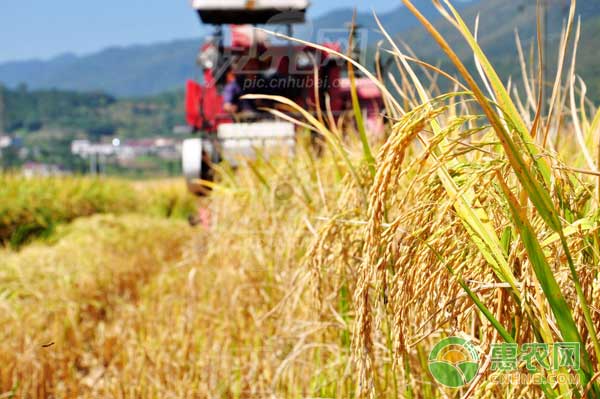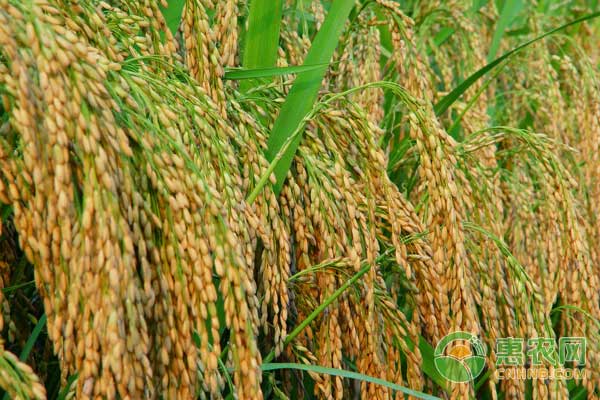In some areas, rice transplanting time is late, and when it is late in growth and development, it encounters low temperature and rainy weather. The lack of sunshine time leads to slow growth of rice. In order to ensure the maturity of rice on time, it can adopt early-maturing technical measures.
First, scientific fertilization
1. Control nitrogen fertilizer. At present, farmers are generally over-fertilized by nitrogen fertilizer. Due to excessive nitrogen in excess, no increase in tillering, delay in emergence, decline in maturity, and weakening of disease resistance, it is necessary to strictly control the amount of nitrogen fertilizer.
2. Increase the application of potassium fertilizer and phosphate fertilizer. Potassium fertilizer plays an important role in rice production. Potassium fertilizer helps to improve the cold resistance and disease resistance of crops. It has the functions of strong stalk, lodging resistance and maturity, which can promote the photosynthesis of crops and increase rice yield. Potassium fertilizer accounted for 60% of the base fertilizer application in 2 times, and 40% of the topdressing fertilizer was applied in the first half of July. Rational application of phosphate fertilizer can accelerate the tillering of rice, promote the differentiation of young ears, grouting and fullness of seeds, promote early maturity, improve drought resistance and cold resistance of crops, increase crop yield and improve product quality. Phosphate fertilizer should be replenished in time when the amount of phosphate fertilizer is small.

Second, reasonable irrigation
1. Shallow water irrigation during the re-greening period. It is enough to keep the water layer 2~3cm during the greening period, and it is mainly shallow before the tillering, and the ground temperature and water temperature are promoted to promote tillering. After the effective tillering, the luxuriant land will be drained for 3 to 5 days and the ineffective tillering will be controlled. The degree of sun-dried field will be white, the ground will be cracked, the white surface of the pond surface will be seen, and the leaf color will fade and promote the root development. After draining the field, dry and wet alternate intermittent irrigation is adopted to promote roots and roots. In this period, if you encounter nighttime temperatures below 17 °C, take deep water mulch. The water layer is about 15cm to prevent obstacle cold damage.
2, booting stage. Filling the "fostering water" in this period should maintain the water layer 3cm, sensitive to temperature and moisture, and should be adapted to local conditions and shallow wet irrigation. In case of low temperature, the water layer should be deepened to prevent obstacles from chilling.
3. Intermittent irrigation during the heading period. Roots and leaves require sufficient moisture and proper ventilation during this period. After filling the 3cm water layer, it is naturally consumed to the water-free layer of the field, and it is kept moist for 2 to 3 days, and the water is circulated to follow the principle that the water is not seen before.
4, the middle of the yellow ripening drainage to promote early maturity into the yellow ripening period to control and reduce water supply, 15 to 20 days before maturity should be timely drainage, improve ground temperature to promote early maturity. Through reasonable irrigation, rice early tillering, early sealing of ridges, water control, water temperature regulation, and water fertility promotion of early maturity.
Third, pest control
Chemical control: focus on preventing rice blast and sheath blight, and protecting the upper three leaves of rice. The rice blast disease is controlled by a bactericide such as Inaba (Fuji No. 1) and Tricyclazole (Inaba), and the sheath blight is controlled by using tilfuramide and Ai Miao.
Agricultural control: rational close planting, scientific regulation of fertilizer and water, timely fielding, and improvement of microclimate in the field can improve the quality of seedlings, enhance resistance, foster growth and reduce the occurrence of pests and diseases.
Fourth, the application of plant growth regulators
Foliar spray fertilizer is applied and the application of phosphorus and potassium fertilizers and micro-fertilizers is emphasized. Early-maturing plant growth mediators were used in the rice harvesting and filling stages, respectively. In order to improve the resistance of rice to enhance the ability to resist high temperature and cold, the weight of the grain should be increased by spraying potassium dihydrogen phosphate. In order to promote photosynthesis and increase the seed setting rate, a new plant growth regulator, brassinolide, can be sprayed. Spraying method: Select the spraying on the foliar surface after 10:00~6:00 in the windless and sunny weather, spray the water with potassium dihydrogen phosphate, spray 2 to 3 times every 5~7d, generally Precocious 3~5d.

Fifth, autumn drainage
It is generally drained in the middle of the yellow ripening season, and the ground can be properly arranged early. Rice from the grouting to the milky stage. After the heavy rain, the rice that has been seriously lodging every year should be drained immediately. Then the fallen rice is lightly supported, and 4 to 5 holes are tied into one to prevent secondary lodging. Strengthening the field management in the later stage will not only ensure the maturity of the rice, but also create convenient conditions for harvesting.
The above is the method for promoting early maturity of rice in the late transplanting period. Pay attention to Huinong.com to learn more about rice cultivation techniques!
Car Automatic Fire Extinguisher
Car Automatic Fire Extinguisher,Fire Extinguisher Stands,Auto Fire Extinguisher,Automotive Fire Extinguisher
DONGGUAN TENYU TECH.INC , https://www.tenyutech.com